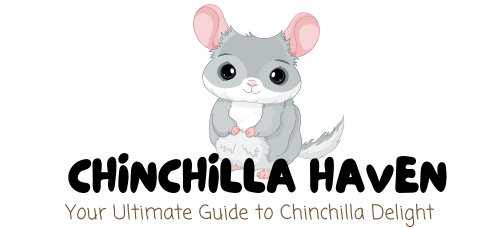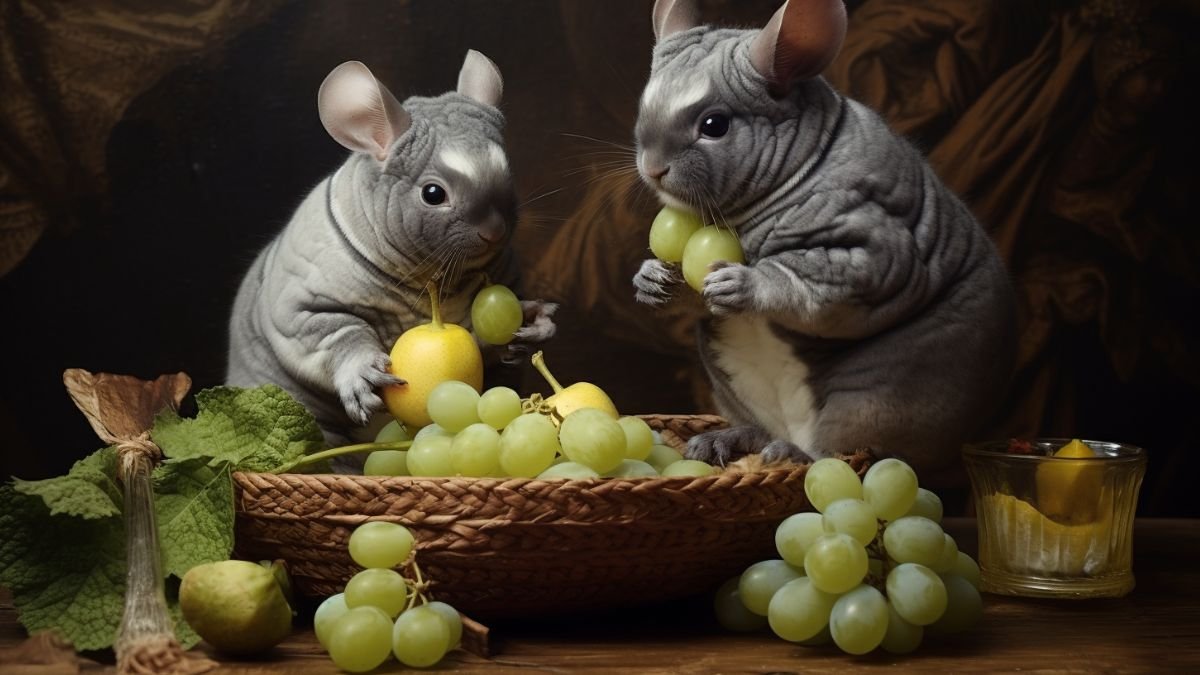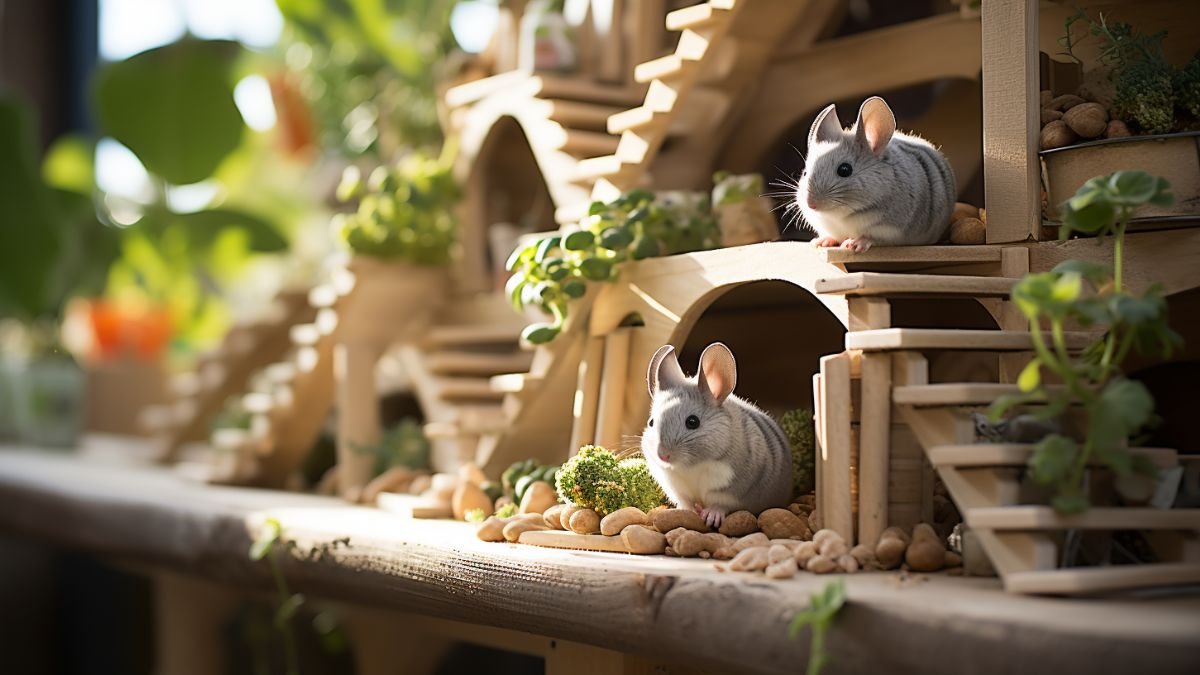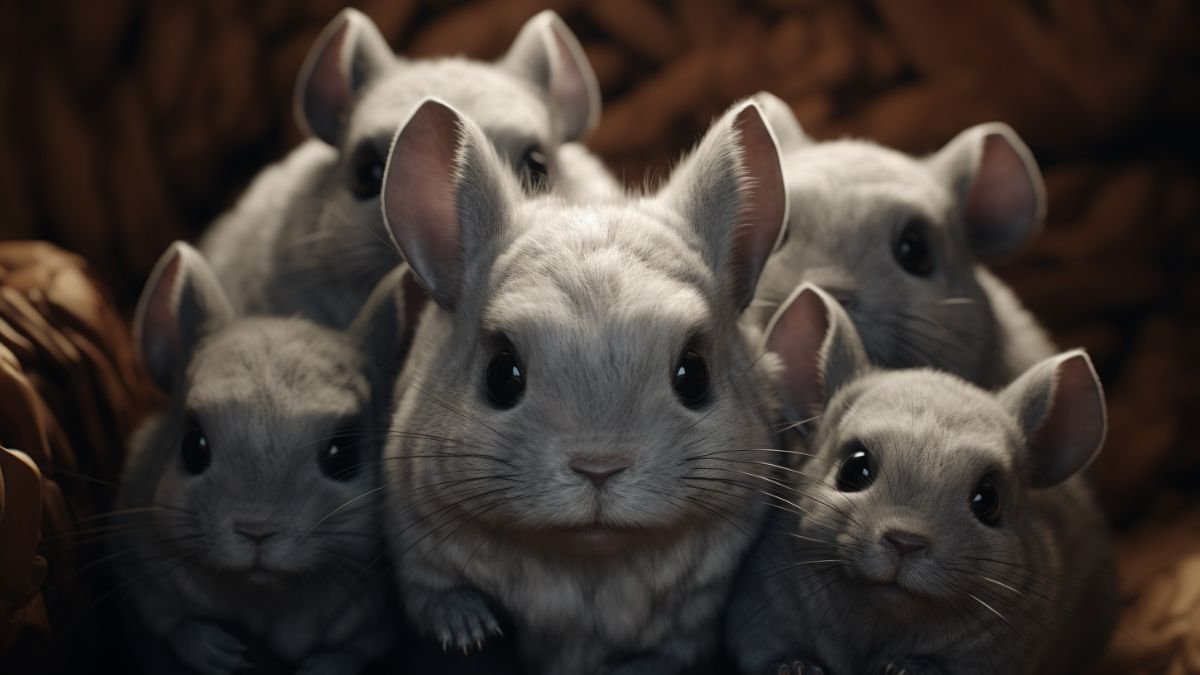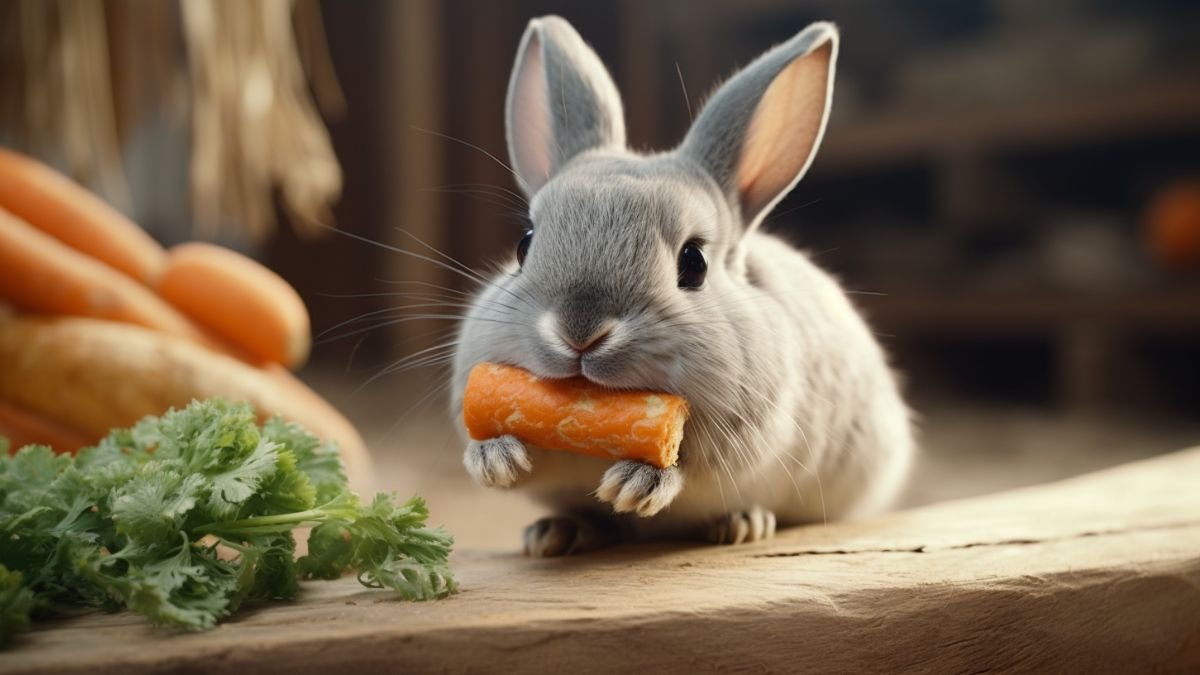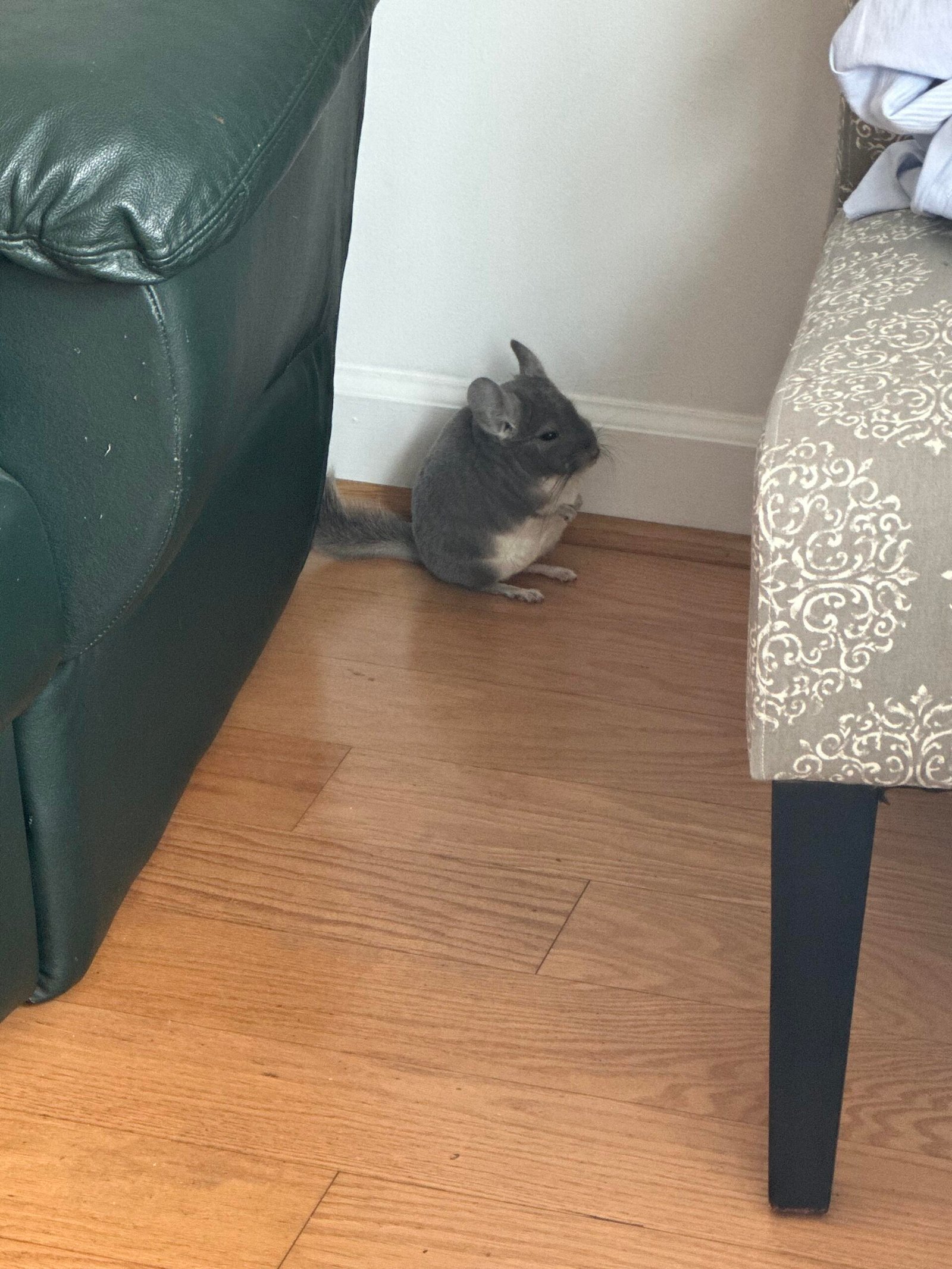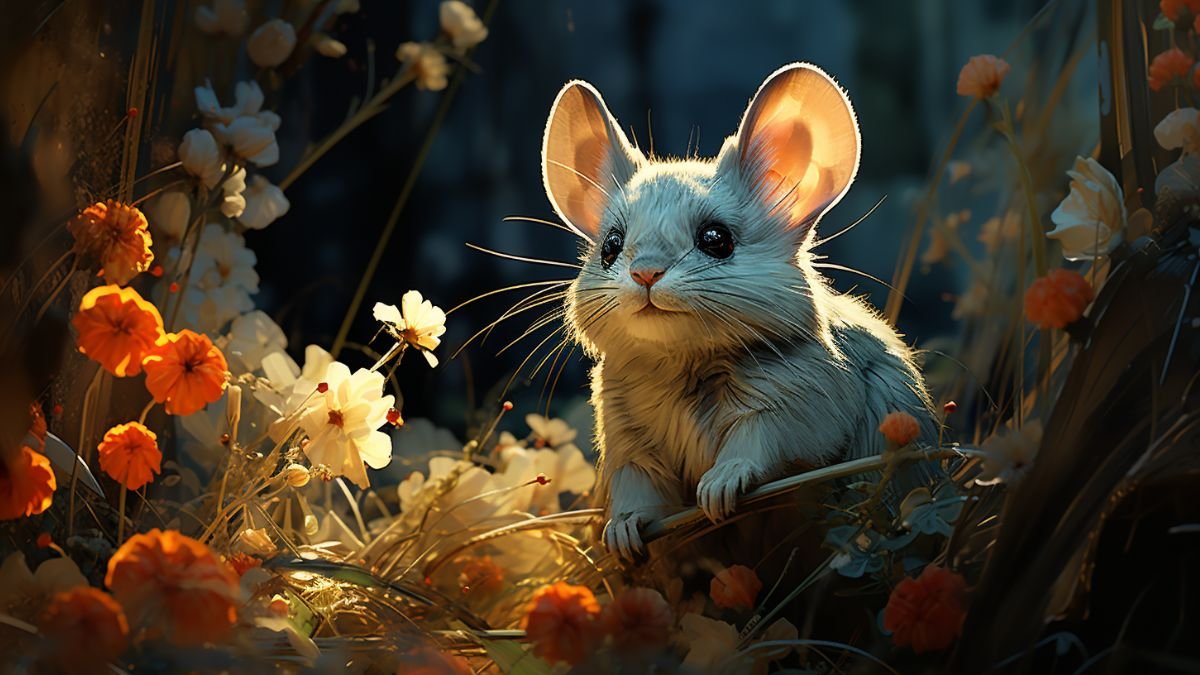
If your chinchilla spends hours gnawing on its cage bars, you’re not alone — and you’re not a bad owner! Bar chewing is one of the most common (and frustrating) behaviors chinchilla owners encounter. While it may look cute or harmless at first, constant chewing can indicate boredom, stress, or unmet enrichment needs.
The good news? You can stop it — safely and effectively — without harming your pet or your sanity. This guide explains exactly why chinchillas chew bars, what it means behaviorally, how to fix it with enrichment, and which toys and cage setups work best.
Understanding the Behavior: Why Chinchillas Chew Bars
Chinchillas are naturally active, intelligent rodents. In the wild, they explore rocky mountain terrains in Peru and Chile, constantly hopping, climbing, and gnawing on bark, pumice, and stems. In captivity, cage life can feel limiting — especially if they don’t have enough outlets for their energy and instinctive chewing behavior.
Bar chewing is not a sign of misbehavior — it’s communication. Your chinchilla is telling you:
- “I’m bored.”
- “I need to chew something safe.”
- “I want out to play.”
- “I’m stressed or anxious.”
Let’s break down the main causes.
Top Reasons Your Chinchilla Chews Cage Bars
1. Boredom or Lack of Enrichment
This is the #1 reason. Chinchillas need constant mental and physical stimulation. Without enough chew toys, climbing ledges, or playtime, they resort to the most available thing — the cage bars.
Rotate chew toys weekly and offer a mix of textures like wood, lava stone, and hay cubes. For ideas, visit best chinchilla toys and chinchilla foraging toys on your site.
You can also check USDA Animal Welfare Guidelines on Small Animal Enrichment to understand enrichment requirements for small mammals.
2. Need to Wear Down Teeth
Chinchilla teeth grow continuously, and chewing keeps them from overgrowing. If they don’t have proper materials to gnaw, they’ll turn to metal bars — which can lead to fractured teeth or painful mouth sores.
Provide natural wood and mineral options like:
Learn more about dental health in your article how to recognize early dental disease in chinchillas (once published).
3. Attention-Seeking Behavior
Chinchillas are smarter than most people think. If chewing the bars gets your attention — even negative attention — they may repeat the behavior for interaction. Try to reward quiet, calm moments instead.
When they start chewing bars, redirect with a new toy or treat, such as Oxbow Simple Rewards Timothy Treats.
4. Stress and Environmental Frustration
A noisy room, bright lights, or frequent cage movements can make chinchillas anxious. Chewing may be a coping mechanism.
Reduce stressors:
- Keep the cage in a quiet, stable area (60–70°F).
- Avoid placing it near TVs or speakers.
- Ensure daily dust baths — they relieve stress and improve mood. See chinchilla dust bath house for setup ideas.
For scientific insight into stress and coping behavior in rodents, see National Institutes of Health – Rodent Behavioral Stress Patterns.
5. Desire for More Playtime
Bar chewing often means your chinchilla wants out to explore. Daily supervised out-of-cage playtime is essential. Aim for 30–60 minutes per evening in a chin-proofed room.
Make sure the environment is safe — no exposed wires or wooden furniture legs. Learn how in how to chin-proof wires and furniture.
Provide tunnels, ramps, and shelves during playtime. Try chinchilla tunnels or a soft chinchilla hammock for rest between jumps.
Dangers of Cage Bar Chewing
While the root is behavioral, constant metal gnawing can have physical risks:
- Tooth fractures or misalignment
- Lip and gum injuries
- Ingestion of paint or rust flakes
- Metal toxicity (especially zinc-coated bars)
If your chinchilla’s cage has flaking paint or rust, upgrade immediately to a stainless-steel or powder-coated enclosure.
Safe cage options can be found on Amazon Chinchilla Cages or MidWest Small Animal Cages.
How to Stop Cage Bar Chewing — Step by Step
Step 1: Identify the Trigger
Ask yourself: Is my chinchilla bored? Hungry? Lacking toys? Try observing the timing of chewing — before feeding, during playtime, or when you walk by.
Step 2: Add Safe Chewing Alternatives
Offer a mix of textures: wood, pumice, lava, hay cubes. Keep 3–5 chew types available at all times and rotate weekly.
Step 3: Create a Daily Play Routine
Free-roam sessions burn energy and satisfy curiosity. Use playpens such as Prevue Pet Playpen for Small Animals for safe playtime.
Step 4: Introduce Foraging Toys
Foraging toys mimic natural behaviors and provide mental stimulation. Hide pellets or hay inside foraging balls or wooden puzzles.
Step 5: Reduce Stressors
Relocate the cage to a quieter room if it’s near constant noise or traffic. Keep lighting dim in the evenings to align with their nocturnal rhythm.
Step 6: Use Positive Reinforcement
Reward calm behavior with healthy treats. Avoid scolding or tapping the cage — this can increase anxiety and make chewing worse.
Step 7: Check Cage Quality
Ensure the bars are smooth and coated with safe, non-toxic materials. Avoid galvanized metal, which can cause zinc poisoning.
Creating an Enrichment-Rich Habitat
Enrichment isn’t a luxury for chinchillas — it’s a necessity. Here’s how to transform their cage into a behavioral playground.
- Chew Variety: Use apple, pear, or willow wood sticks.
- Activity Levels: Add climbing shelves and hideouts like chinchilla hideout houses.
- Resting Areas: Soft fleece liners or chinchilla hammocks for comfort.
- Cooling & Calm: Add chinchilla cooling stones for heat relief.
For more ideas, visit the American Society for Laboratory Animal Science enrichment page: Enrichment for Rodents – aslas.org.
Top 5 Products to Stop Cage Bar Chewing
| Rank | Product Name | Description | Amazon Link |
|---|---|---|---|
| 1 | Apple Wood Sticks for Chinchillas | 100% natural wood that satisfies gnawing urges safely. | View on Amazon |
| 2 | Kaytee Lava Ledge Chew Toy | Mountable ledge encourages chewing and climbing, reducing boredom. | View on Amazon |
| 3 | Pumice Stones for Chinchillas | Natural mineral chew that helps wear teeth and relieve stress. | View on Amazon |
| 4 | Prevue Pet Small Animal Playpen | Perfect for safe out-of-cage exercise sessions. | View on Amazon |
| 5 | Chinchilla Foraging Ball | Keeps your chinchilla mentally engaged and reduces stress chewing. | View on Amazon |
Preventing Bar Chewing in the Long Term
- Maintain Routine: Feed, play, and clean at consistent times daily.
- Provide Enrichment Rotation: Replace toys weekly to maintain interest.
- Avoid Overcrowding: If housing multiple chinchillas, ensure at least 2 cubic feet per animal.
- Offer Hay Constantly: Keeps them busy and promotes dental wear — see chinchilla hay guide.
- Monitor Teeth Health: Schedule annual dental checkups.
If chewing persists after enrichment and cage upgrades, discuss behavior modification with a certified exotic animal vet.
FAQ: Chinchilla Cage Chewing Behavior
1. Is chewing cage bars normal for chinchillas?
Yes, occasional chewing is normal, but constant bar biting indicates boredom, stress, or lack of stimulation.
2. Can chewing bars hurt their teeth?
Yes. Prolonged metal chewing can cause fractures or malocclusion. Provide safe chew toys instead.
3. How do I stop my chinchilla from chewing bars at night?
Ensure the cage is enriched, and your chinchilla gets sufficient playtime before bedtime. Night chewing usually means excess energy.
4. Should I cover the cage to stop chewing?
No, covering restricts airflow and visibility. Address root causes instead — stress or boredom.
5. What materials are safe for chinchillas to chew?
Apple, pear, willow wood, lava rock, and pumice. Avoid plastics, treated wood, or painted surfaces.
Key Takeaways
- Cage bar chewing is usually a behavioral signal, not bad behavior.
- Enrich the environment with natural chew toys, climbing areas, and playtime.
- Replace unsafe cages and offer safe, varied textures to chew.
- Use positive reinforcement — never punish.
- Maintain a calm, consistent environment.
With patience and the right setup, your chinchilla will redirect its energy away from metal bars and toward safe, healthy enrichment activities.
CTA: Build a Happier Cage Today
Try these essentials for a stress-free, chew-safe environment:
- Apple Wood Sticks for Chinchillas for healthy gnawing.
- Kaytee Lava Ledge Chew Toy for climbing and chewing.
- Pumice Stones for Chinchillas to wear teeth naturally.
- Prevue Pet Playpen for daily out-of-cage activity.
- Chinchilla Foraging Ball for mental stimulation.
Author:
Written by Chinchilla Haven
Expert guides and trusted advice for chinchilla owners who want happier, healthier pets.
